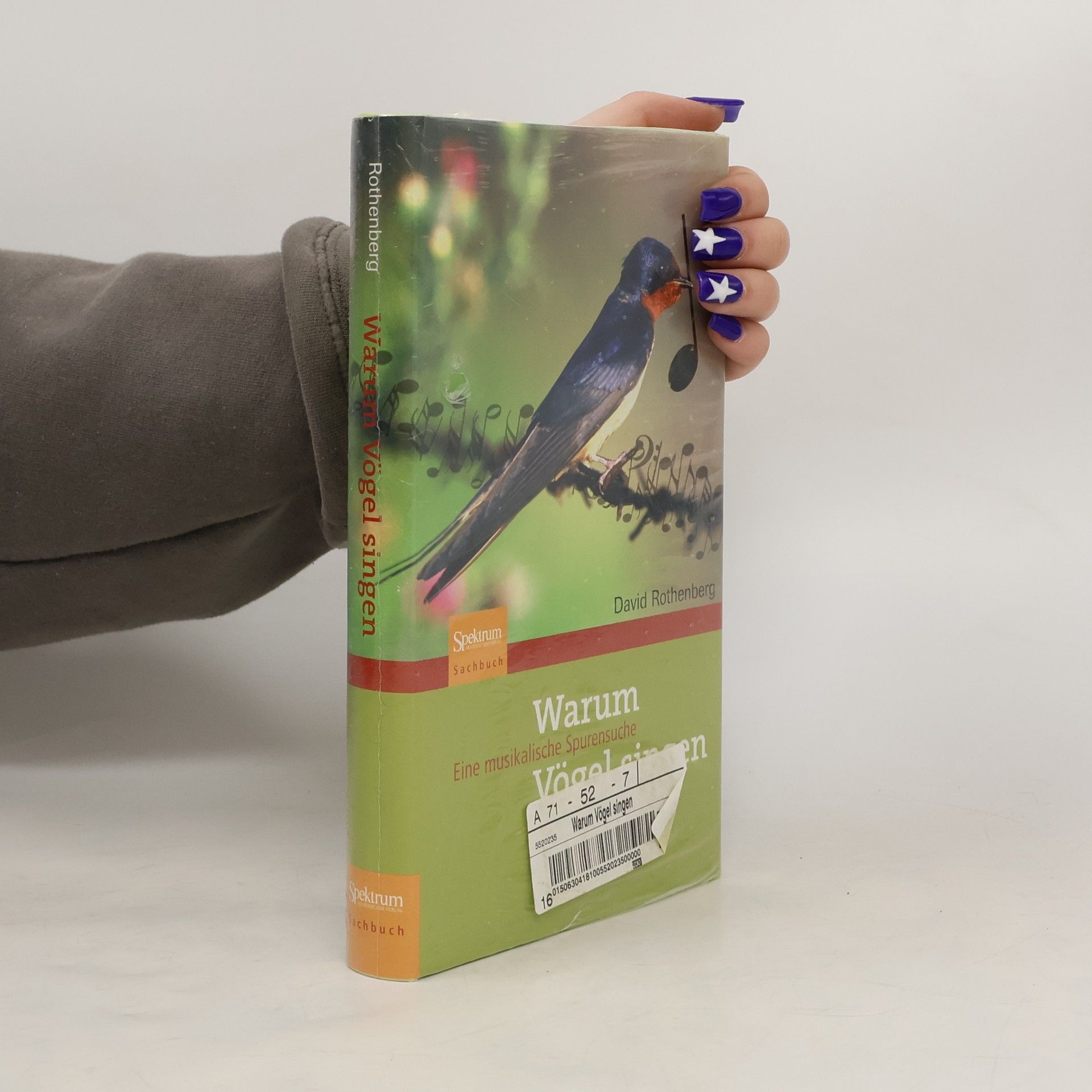The marvelous sonic world of whales, from the perspective of music and science. Whale song is an astonishing world of sound whose existence no one suspected before the 1960s. Its discovery has forced us to confront the possibility of alien intelligence—not in outer space but right here on earth. Thoughtful, richly detailed, and deeply entertaining, Whale Music uses the enigma of whale sounds to open up whales' underwater world of sonic mystery. In observing and talking with leading researchers from around the globe as they attempt to decipher undersea music, Rothenberg tells the story of scientists and musicians confronting an unknown as vast as the ocean itself. His search culminates in a grand attempt to make interspecies music by playing his clarinet with whales in their native habitats, from Russia to Canada to Hawaii. This is a revised edition of Thousand Mile Song, originally published in 2008. The latest advances in cetacean science and interspecies communication have been incorporated into this new edition, along with added photographs and color whale scores.
David Rothenberg Poradie kníh






- 2023
- 2022
Invisible Mountains
- 106 stránok
- 4 hodiny čítania
two long poems from places in nature, one in Norway, one in Scotland
- 2020
David Rothenberg hat Musik mit Walen, Insekten, mit Wasser und Wind gemacht: Den perfekten Sound haben ihm dann aber die Berliner Nachtigallen geliefert, die dort im Wettkampf mit dem Stadtlärm über sich hinauswachsen. Der amerikanische Musikologe und Musiker Rothenberg, eine Ikone der Experimentalmusikszene weltweit, hat eine Symphonie der Großstadt geschrieben, das der Nachtigall ein musikalisches Denkmal setzt. Rothenberg, der Wissenschaftler, analysiert den Klang der Tiere, der Musiker Rothenberg jammt mit den Vögeln. So wird sein Buch zu einer poetischen Kulturgeschichte der Nachtigall und zur Erforschung der Beziehung von Geräusch und Musik und Poesie. Dazu setzt sich Rothenberg frühmorgens in die Berliner Hasenheide oder trifft Neuro- und Verhaltensbiologin und Leiterin des Nachtigall-Forschungsstelle an der Freien Universität, lässt sich vom Himmel über Berlin durch die Stadt leiten, trifft Berliner Musiker und Sänger und liest, was Kant zur Nachtigall geschrieben hat. Mit dem Musiker Korhan Erel gab er 2014 das erste Nachtigall-Konzert. Seitdem machen die beiden jedes Jahr im Mai öffentlich Musik - mit immer mehr Musikern aus der ganzen Welt.
- 2020
How Wittgenstein's theories have been bent, transformed, and expanded in the world outside philosophy.
- 2019
Nightingales in Berlin
- 184 stránok
- 7 hodin čítania
"Rothenberg seeks these musical creatures out, clarinet in tow, and makes a new music with them. He takes us to the urban landscape of Berlin- longtime home to nightingale colonies where the birds sing ever louder in order to be heard- and invites us to listen in on their remarkable collaboration as birds and instruments riff off of each other's sounds. Through dialogue, travel records, sonograms, tours of Berlin's city parks, and musings on the place animal music occupies in our collective imagination, Rothenberg takes us on a quest for a new sonic alchemy, a music impossible for any one species to make alone"--from front jacket flap
- 2015
Vs. Interpretation
An Anthology on Improvisation
- 2014
BUG MUSIC
- 290 stránok
- 11 hodin čítania
The emergence of cicadas in 2013 marked a remarkable event, likened to witnessing a comet or solar eclipse, as they completed their seventeen-year life cycle. This phenomenon highlights the profound impact of insect sounds on human understanding of rhythm, showcasing how the natural world influences our perception of time and music. The book explores the intricate relationship between the rhythmic patterns of insects, such as crickets, and their significance in human culture and experience.
- 2013
'The peacock's tail makes me sick!' said Charles Darwin. That's because the theory of evolution as adaptation can't explain why nature is so beautiful. It took the concept of sexual selection for Darwin to explain that, a process that has more to do with aesthetic taste than adaptive fitness. Survival of the Beautiful is a revolutionary new examination of the interplay of beauty, art, and culture in evolution. Taking inspiration from Darwin's observation that animals have a natural aesthetic sense, philosopher and musician David Rothenberg probes why animals, humans included, have an innate appreciation for beauty - and why nature is, indeed, beautiful.
- 2012
Fortune in My Eyes
A Memoir of Broadway Glamour Social Justice and Political Passion
- 346 stránok
- 13 hodin čítania
The memoir delves into the author's vibrant experiences in the world of Broadway, highlighting the intersection of glamour and social justice. It offers an intimate look at the challenges and triumphs faced in the pursuit of artistic expression, while also addressing political passions that shaped the author's journey. Through personal anecdotes and reflections, the narrative captures the essence of a life dedicated to both performance and advocacy, making it a compelling read for those interested in the arts and activism.
- 2007
Warum Vögel singen
Eine musikalische Spurensuche
Die Vielfalt der Vogelgesänge ist sowohl ästhetisch als auch wissenschaftlich ein großes Rätsel. Evolutionsbiologen sind sich uneinig, warum Vögel so einfallsreich singen und so viel Zeit damit verbringen. Die üblichen Erklärungen wie Revierverteidigung und Anlockung von Partnern reichen nicht aus, um die Energie und Vielfalt des Gesangs zu erklären. Könnte es sein, dass Vögel einfach gerne singen? Diese naheliegende Frage wird zunehmend als wahrer Grund betrachtet. Der Autor geht einfühlsam der Frage nach, warum Vögel singen, wie sie es tun und was ihre Gesänge für Artgenossen und Menschen bedeuten. Er stützt sich auf Gespräche mit Neurowissenschaftlern, Ökologen und Komponisten und verbindet wissenschaftliche Erkenntnisse mit einem tiefen Verständnis für musikalische Schönheit. Rothenberg taucht in das Herz und die Seele des Vogelgesangs ein, sei es beim Spielen der Klarinette mit dem Weißhauben-Häherling in Pittsburgh oder bei einer Jam-Session mit dem Braunrücken-Leierschwanz in Australien. Als Naturkundler, Philosoph, Musiker und Forscher bietet er intime Einblicke in dieses faszinierende Phänomen, das uns sowohl vertraut als auch fremd ist.



